Amanda Barrie was a star of the English stage, screen and the occasional Carry On film. She was believed to be a slow learner for years as she could not read, so she would have a friend repeat her lines over and over to her until she was word perfect and completely cued-in! She was finally diagnosed with dyslexia. Here she recounts anecdotes from her packed professional life and talks frankly and without self-pity about her disrupted childhood, disastrous schooldays and her relationships with both men and women, including remarkable threesomes with her husband Robin Hunter. An ideal piece for any Carry On fan. Illustrated with black and white and colour photographs.
-
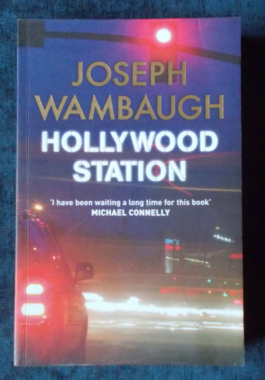
If you got a call that Batman was assaulting Spider-Man and the person who called it in was Marilyn Monroe, who is actually a 6'3" transvestite, there's only one place you could be: nothing is too weird in Los Angeles. For the cops of Hollywood Station, policing crack-heads dressed as cartoon characters is business as usual. But when there's a diamond robbery connected to the Russian Mafia and a pair of totally clueless and ambitious crystal meth addicts, the pieces have got to be put together by the sergeant they call the Oracle and his squad of street cops. There's Budgie Polk, a twenty-something firecracker with a four-month-old at home; Wesley Drubb, a rich boy who joined the force seeking thrills; Fausto Gamboa is the tetchy veteran; and Hollywood Nate, who never shuts up about movies. They spend their days in patrol cars and their nights in the underbelly of a city that never sleeps. From their headquarters at Hollywood Station, they see the glamour city for what it is: a field of land mines, where the mundane is dangerous and the dangerous is mundane.
-

Bluey: Harold Lewis
$12.00The sequel to Crow On A Barbed Wire Fence. Bluey's adventures did not end with his departure from Australia in 1914. In this sequel he tells of his London childhood and why he visited Australia in the first place. There's also the tale of his escape from the German naval fleet in World War I, his role in two mutinies and the headline stories he reported as a Fleet Street journo, sportswriter and radio interviewer. Last but not least, he tells of his family life and his achievements as a successful magazine publisher - what a full, rich and adventurous life!
-
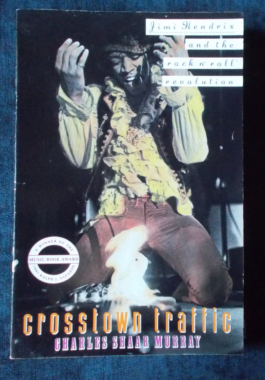
This is the history of a man, the electric guitar and an era of music that will never be forgotten. Murray pulls up the rug where good rock 'n' roll hides and rips through the floorboards with prose as bold and explosive as Hendrix's guitar. Here is an insightful and poignant book about the music of Jimi Hendrix and how rock culture and its influence defined an era. With fabulous archival colour and black and white photos.
-
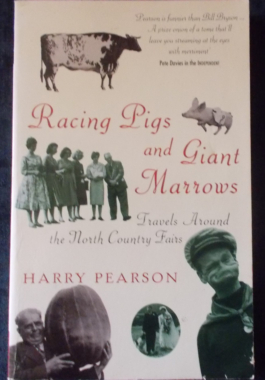
Following his book about football in the north-east, The Far Corner, Harry Pearson vowed that his next project would not involve hanging around outdoors on days so cold that itinerant dogs had to be detached from lamp-posts by firemen. It would be about the summer: specifically, about a summer of shows and fairs in the north of England. Encompassing such diverse talents as fell-running, tupperware-boxing and rabbit fancying (literally), and containing many more jokes about goats than is legal in the Isle of Man, Racing Pigs and Giant Marrows must be the only book in existence to explain the design faults of earwigs and expose English farmers' fondness for transvestism. It is also Harry's search for the English summer country fairs he remembers from his youth. Also included: the tale of the supernaturally dense Archway baby and the staying power of cinder-toffee.
-

Liz: David Heymann
$10.00The ultimate and intimate bio of Elizabeth Taylor. Child star in National Velvet, youthful object of desire controlled by her mother and MGM, Oscar-winning actress in Butterfield 8 and Who's Afraid of Virginia Woolf?, eight-time wife and champion of funding for AIDS research and intimate of celebrities and tycoons for six decades. The volume contains never-before published studio documentation, interviews with stars, directors, friends and family, her battle with weight issues, alcohol and drug addiction, affairs, lovers and husbands, her own million-dollar perfume and jewellery lines - it's all here and more. Lavishly illustrated with black and white photos. -

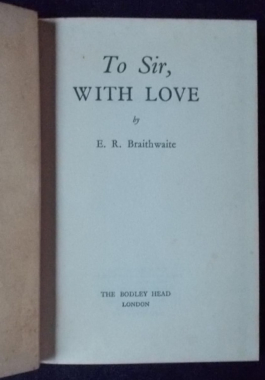 The autobiographical tale of Rick Braithwaite's battle to find work in post-war London. A trained engineer, he could only find work as a teacher. When a woman refuses to sit next to him on the bus, Braithewaite is saddened and angered by her prejudice. In cosmopolitan London, he had hoped for a more enlightened attitude. When he begins his first teaching job in a tough East End school he finds the same hostile prejudice. Yet slowly and painfully, the barriers begin to break. He shames his pupils, wrestles with them, enlightens them and eventually comes to love them - as they come to love and respect him. To Sir With Love is the story of a dedicated teacher who turns hate into love, teenage rebelliousness into energetic self-respect, contempt into consideration for others - the story of a man's own integrity winning through against all the odds.
The autobiographical tale of Rick Braithwaite's battle to find work in post-war London. A trained engineer, he could only find work as a teacher. When a woman refuses to sit next to him on the bus, Braithewaite is saddened and angered by her prejudice. In cosmopolitan London, he had hoped for a more enlightened attitude. When he begins his first teaching job in a tough East End school he finds the same hostile prejudice. Yet slowly and painfully, the barriers begin to break. He shames his pupils, wrestles with them, enlightens them and eventually comes to love them - as they come to love and respect him. To Sir With Love is the story of a dedicated teacher who turns hate into love, teenage rebelliousness into energetic self-respect, contempt into consideration for others - the story of a man's own integrity winning through against all the odds. -
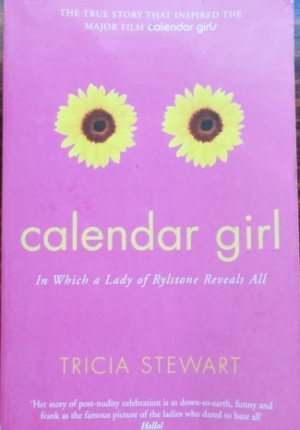
When John Baker died of cancer, many of his friends in the small Yorkshire village of Cracoe were devastated. During his illness, Tricia had joked with him about creating an alternative W.I. calendar - she and his wife Angela were members - but she had no notion of the events she would set in motion. Expecting only local interest, the ladies were stunned by the media frenzy when the calendar was launched in 1999. Over the next two years, the calendar girls found themselves in newspapers, on television, chosen as Women of the Year and touring America. They raised £500,000 for leukaemia research. This is NOT a film novelisation - this is the true story of the highs, lows, funny moments and sad ones too. 'It's not naked - it's nude!"
-

Or: Six Good Reasons to Stay Home and Bolt the Door. There's plenty of books on manners and etiquette, and this book is not about either. It's about the rudeness of modern life and the sense of outrage we all experience when we discover that other people are crass, selfish and inconsiderate. You ask a shop assistant, "Can you tell me the price of this? There doesn't appear to be a label," and she says, "What d'you think I am, psychic?" Whatever happened to please and thank you? Why do people behave in public as if they're in private? It's about that sort of bad manners. A bitingly humorous look at the utter bloody rudeness of everyday life, from maddening mobile phones to stupid slang.
-
 Dickens was an adept at what he called laying his hand upon the time, and in doing so became the recognised exponent of the English character and society to Victorian England and to the world. He revealed the masses to the classes in one country, and people all over the world understood what he had to say. No-one of his day understood the condition of England better and he appealed to the people with his life long crusade against illiteracy, vile industrial conditions and slumdom. His novels paint the most vivid picture of the appalling conditions that were considered adequate for the poor and the complete lack of interest from those in power who could have changed these conditions, not to mention the corruption endemic amongst those in power. His books were instrumental in creating the awareness needed for lasting and beneficial change.
Dickens was an adept at what he called laying his hand upon the time, and in doing so became the recognised exponent of the English character and society to Victorian England and to the world. He revealed the masses to the classes in one country, and people all over the world understood what he had to say. No-one of his day understood the condition of England better and he appealed to the people with his life long crusade against illiteracy, vile industrial conditions and slumdom. His novels paint the most vivid picture of the appalling conditions that were considered adequate for the poor and the complete lack of interest from those in power who could have changed these conditions, not to mention the corruption endemic amongst those in power. His books were instrumental in creating the awareness needed for lasting and beneficial change. -

Mervyn Leroy (1900 - 1987) was the director of such epic and famous films as Waterloo Bridge, Mr. Roberts, Quo Vadis? The Wizard of Oz and the extremely scary The Bad Seed, just to name a few. He began work selling newspapers at the age of ten after his father's death. His love affair with show business began when he got a bit part in a play. He worked in vaudeville before trying his luck in Hollywood, starting as a wardrobe assistant before graduating to a job with William DeMille. He was assigned to direct Mary Astor in No Place To Go - and the rest is history, as he mingled with such film industry founders as Jesse Lasky, Cecil B. DeMille, Jack Warner, Irving Thalberg and Louis B. Mayer. He also discovered such stars as Clark Gable and Lana Turner. Illustrated with black and white photos. One for the very dedicated film buff.
-

Goldwyn: Arthur Marx
$15.00The incredible tale of Samuel Goldwyn, who emigrated alone to America as a teenager, became a glove salesmen and then made his way to the top of the fledgling film industry by some very questionable ways and means. Did he really ask David O. Selznick, "So, who've you got to play Scarface O'Hara?" And did he really believe that 'a verbal contract wasn't worth the paper it's printed on'? Arthur Marx shows us a Goldwyn who was a highly complex and puzzling individual. He supplies in abundance more famous Goldwynisms - and a good many stories printed here for the first time. Rich in anecdotal detail about both Goldwyn’s personal and professional life, this biography is a testament to his role as both a perfectionist in art and a founder of one of America’s great industries. The author is the son of Groucho Marx and thus had access to many of those mentioned in this biography. -
 This is Freddy and Philip's story - the true story of a couple who married during the 70 day seige of Singapore and who became prisoners of the Japanese and were interned in Changi Gaol in Singapore. With other imprisoned medical men, Dr. Philip Bloom was forced to perform miracles of improvised surgery, using anything he could lay his hands on to make artificial limbs for crippled fellow-prisoners. Freddy, an American and temporary nurse, was interred in the women's camp. Apart from sharing the suffering with 400 other women and 80 children, she fell victim to the dreaded Kampei Tai and was locked for days and nights in a 'cage' with imprisoned men. Both survived, but suffered terrible hardships. The book is their lives in the prison camps. Illustrated with black and white photographs.
This is Freddy and Philip's story - the true story of a couple who married during the 70 day seige of Singapore and who became prisoners of the Japanese and were interned in Changi Gaol in Singapore. With other imprisoned medical men, Dr. Philip Bloom was forced to perform miracles of improvised surgery, using anything he could lay his hands on to make artificial limbs for crippled fellow-prisoners. Freddy, an American and temporary nurse, was interred in the women's camp. Apart from sharing the suffering with 400 other women and 80 children, she fell victim to the dreaded Kampei Tai and was locked for days and nights in a 'cage' with imprisoned men. Both survived, but suffered terrible hardships. The book is their lives in the prison camps. Illustrated with black and white photographs. -

Sometimes Hollywood gets it wrong - that's the popular belief. Sometimes, Hollywood got it right. But did early woman emerge from the caves in an animal skin bikini, a la Raquel Welch, in One Million Years B.C.? Is the great chariot race in Ben-Hur like the real thing? Was the relationship between Henry VIII and Anne Boleyn portrayed fairly? This book is divided into the Seven Ages of Hollywood, from the Creation to the Vietnam War, comparing fact - insofar as it can be ascertained - with the versions presented in Hollywood. Cover shows Charlton Heston being epically (and hopefully accurately) Moses in The Ten Commandments.
-
 'We're happy little Vegemites, as bright as bright can be...' Who remembers Vegemite sandwiches in their school lunch boxes? Or, when you felt a bit crook, Vegemite on Sao biscuits to settle your stomach? Generations of Aussie kids have been raised on Vegemite. In 1992, Kraft produced the 70th Happy Birthday Vegemite book, full of games, memorabilia, recipes, advertisement and facts all about Vegemite. V not only stood for Vegemite - it stood for vitamins and vitality, vim and vigor!
'We're happy little Vegemites, as bright as bright can be...' Who remembers Vegemite sandwiches in their school lunch boxes? Or, when you felt a bit crook, Vegemite on Sao biscuits to settle your stomach? Generations of Aussie kids have been raised on Vegemite. In 1992, Kraft produced the 70th Happy Birthday Vegemite book, full of games, memorabilia, recipes, advertisement and facts all about Vegemite. V not only stood for Vegemite - it stood for vitamins and vitality, vim and vigor! -
 Ukrainian-born Irène Némirovsky was already a successful writer in the early 1940s and living in Paris. She was also Jewish and in 1942 she was arrested and deported to Auschwitz: a month later she was dead at the age of thirty-nine. She intended Suite Française to be a five-part novel but at the time of her death, she had only completed the first two parts. The handwritten manuscripts were hidden in a suitcase that her daughters would take with them into hiding and eventually into freedom. A Storm In June: In the chaos of the massive 1940 exodus from Paris on the eve of the Nazi invasion, several families and individuals are thrown together under circumstances beyond their control. They share nothing but the harsh demands of survival - some try to maintain lives of privilege, others struggle simply to preserve their lives - but soon they will be forced to face physical and emotional displacement and the annihilation of the world they know. Dolce: Life in a German-occupied provincial village becomes increasingly complex and uneasy as the villagers - from aristocrats to shopkeepers to peasants - cope as best they can with the soldiers billeted amongst them. Some choose resistance, others collaboration - and lives are transformed by each and every choice. Irène Némirovsky saw that true nobility and love did exist but often in the most surprising places.
Ukrainian-born Irène Némirovsky was already a successful writer in the early 1940s and living in Paris. She was also Jewish and in 1942 she was arrested and deported to Auschwitz: a month later she was dead at the age of thirty-nine. She intended Suite Française to be a five-part novel but at the time of her death, she had only completed the first two parts. The handwritten manuscripts were hidden in a suitcase that her daughters would take with them into hiding and eventually into freedom. A Storm In June: In the chaos of the massive 1940 exodus from Paris on the eve of the Nazi invasion, several families and individuals are thrown together under circumstances beyond their control. They share nothing but the harsh demands of survival - some try to maintain lives of privilege, others struggle simply to preserve their lives - but soon they will be forced to face physical and emotional displacement and the annihilation of the world they know. Dolce: Life in a German-occupied provincial village becomes increasingly complex and uneasy as the villagers - from aristocrats to shopkeepers to peasants - cope as best they can with the soldiers billeted amongst them. Some choose resistance, others collaboration - and lives are transformed by each and every choice. Irène Némirovsky saw that true nobility and love did exist but often in the most surprising places. -
 The tale of the White Star Liner Oceanic which struck a remote reef of Shetland and sank in 1914, just after the outbreak of World War One. This 'Queen of the Seas' was more magnificently luxurious than her famous sister Titanic. It is remarkable that the disaster was scarcely heard of at the time and is now all but forgotten; but it was wartime; secrecy was paramount and the line had been taken over by the Royal Navy and had become the armed cruiser HMS Oceanic, yet still retaining its grand marble bathrooms, gilt carvings, gold-plated fittings and stained glass domes. The cause of the disaster is classic - there were two captains; one naval and the other merchant navy, although the naval officer was in supreme command. The ship was on patrol off the north coast of Scotland; the navigator was miles out in in his estimate of of its position on September 8 and when the mist cleared, instead of being well south and west of the isle of Foula, the ship was east of it and heading straight for the terrible Shaalds reef. After that, mistake piled on mistake - the bow struck and the tide pushed the ship further onto the reef; and the giantess was poised briefly before breaking up and sinking. A remarkable salvage operation of the Oceanic was achieved in 1974.
The tale of the White Star Liner Oceanic which struck a remote reef of Shetland and sank in 1914, just after the outbreak of World War One. This 'Queen of the Seas' was more magnificently luxurious than her famous sister Titanic. It is remarkable that the disaster was scarcely heard of at the time and is now all but forgotten; but it was wartime; secrecy was paramount and the line had been taken over by the Royal Navy and had become the armed cruiser HMS Oceanic, yet still retaining its grand marble bathrooms, gilt carvings, gold-plated fittings and stained glass domes. The cause of the disaster is classic - there were two captains; one naval and the other merchant navy, although the naval officer was in supreme command. The ship was on patrol off the north coast of Scotland; the navigator was miles out in in his estimate of of its position on September 8 and when the mist cleared, instead of being well south and west of the isle of Foula, the ship was east of it and heading straight for the terrible Shaalds reef. After that, mistake piled on mistake - the bow struck and the tide pushed the ship further onto the reef; and the giantess was poised briefly before breaking up and sinking. A remarkable salvage operation of the Oceanic was achieved in 1974. -
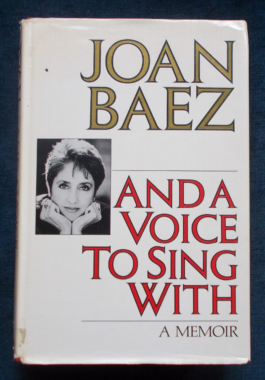 Joan Baez, the undisputed Queen of Folk, was catapulted to fame after her appearance at the 1958 Newport Folk Festival. Here, she not only tells her story, but the story of the changing social history of her time, from the smoke-filled coffee houses of the 1950s to the Vietnam war protests, Woodstock and beyond.
Joan Baez, the undisputed Queen of Folk, was catapulted to fame after her appearance at the 1958 Newport Folk Festival. Here, she not only tells her story, but the story of the changing social history of her time, from the smoke-filled coffee houses of the 1950s to the Vietnam war protests, Woodstock and beyond. -
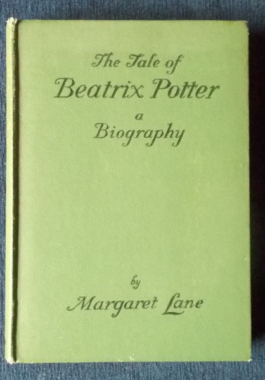 Beatrix Potter lived a modest, unsensational and private life. The first few decades were spent in being governess-taught at home and with few friends outside of her brother and extended family and in being the dutiful daughter. She loved to study nature and became a very good natural scientist - but by 1897, Beatrix was 31 and searching for more independent activities, wishing to earn some money of her own while dutifully taking care of her parents, dealing with her especially demanding mother as well as managing their various households. From painting natural botanical specimens she progressed to fantasy pictures of animals and thence to the book that became the classic Tale Of Peter Rabbit. And the rest - of course - is history. This biography was only made possible with the assistance of her family friends - the tale of the creator behind the perennial animal stories beloved by generations of children. Includes four colour plates and sixteen black and white photographs.
Beatrix Potter lived a modest, unsensational and private life. The first few decades were spent in being governess-taught at home and with few friends outside of her brother and extended family and in being the dutiful daughter. She loved to study nature and became a very good natural scientist - but by 1897, Beatrix was 31 and searching for more independent activities, wishing to earn some money of her own while dutifully taking care of her parents, dealing with her especially demanding mother as well as managing their various households. From painting natural botanical specimens she progressed to fantasy pictures of animals and thence to the book that became the classic Tale Of Peter Rabbit. And the rest - of course - is history. This biography was only made possible with the assistance of her family friends - the tale of the creator behind the perennial animal stories beloved by generations of children. Includes four colour plates and sixteen black and white photographs. -
 Empires remain alive in our minds by dint of the great works they achieve. And the Roman empire is still the world's preceptor in politics, law, administration and the art of war. Her legal advisors laid the foundations of justice and morals in society; her municipal system has handed down criteria of administration still in use today. The Romans built triumphal arches, the domed Pantheon, aqueducts, circuses and amphitheatres for their captains, the needs of their empire and the pleasure of their great cities, in addition to their military roads which spread their will to the ends of the earth. They also created the Coliseum and the Thermal Baths of Caracella, so majestic they can be taken as a symbol of Roman dominion. The scandal of Roman orgies surpassed anything that had been seen in the Orient; Latin is the parent of many modern languages; and for Cicero, Seneca and Tacitus, the most imperious need was the free possession of the self. With colour and blak and white photographs and artistic representations of events, places and people.
Empires remain alive in our minds by dint of the great works they achieve. And the Roman empire is still the world's preceptor in politics, law, administration and the art of war. Her legal advisors laid the foundations of justice and morals in society; her municipal system has handed down criteria of administration still in use today. The Romans built triumphal arches, the domed Pantheon, aqueducts, circuses and amphitheatres for their captains, the needs of their empire and the pleasure of their great cities, in addition to their military roads which spread their will to the ends of the earth. They also created the Coliseum and the Thermal Baths of Caracella, so majestic they can be taken as a symbol of Roman dominion. The scandal of Roman orgies surpassed anything that had been seen in the Orient; Latin is the parent of many modern languages; and for Cicero, Seneca and Tacitus, the most imperious need was the free possession of the self. With colour and blak and white photographs and artistic representations of events, places and people. -
 From the author of I Can Jump Puddles. It's time to visit Alan Marshall's Australia: sitting on the sliprail exchanging yarns, driving a buggy down long dusty trails. And meet such wonderful characters as Lance Skuthorpe, who tethered a bull in Bourke Street and offered five quid to anyone who could ride him for half a minute and Binjarrpooma, the terror of Arnhem Land. Make a visit to an Australia that is now gone.
From the author of I Can Jump Puddles. It's time to visit Alan Marshall's Australia: sitting on the sliprail exchanging yarns, driving a buggy down long dusty trails. And meet such wonderful characters as Lance Skuthorpe, who tethered a bull in Bourke Street and offered five quid to anyone who could ride him for half a minute and Binjarrpooma, the terror of Arnhem Land. Make a visit to an Australia that is now gone. -
 Based on meticulous research and interviews with dozens of family members, friends, lovers, directors, and costars, Rebel offers a revelatory look at actor and film icon James Dean (1931-1955) - cinema's most enduring symbol of rebellious youth, has held the world's fascination since his tragic death at the age of twenty-four. From the dusty roads of rural Indiana to Manhattan's gay culture, from Broadway to Burbank, here is Dean's troubled life: the tragic death of his mother when he was nine; his tumultuous relationship with his father; his rise to stardom in New York and Hollywood and his on-and off-screen exploits. With black and white photos.
Based on meticulous research and interviews with dozens of family members, friends, lovers, directors, and costars, Rebel offers a revelatory look at actor and film icon James Dean (1931-1955) - cinema's most enduring symbol of rebellious youth, has held the world's fascination since his tragic death at the age of twenty-four. From the dusty roads of rural Indiana to Manhattan's gay culture, from Broadway to Burbank, here is Dean's troubled life: the tragic death of his mother when he was nine; his tumultuous relationship with his father; his rise to stardom in New York and Hollywood and his on-and off-screen exploits. With black and white photos. -
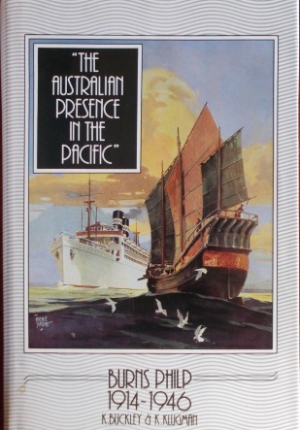 This is the second and final volume of the centenary history of Burns, Philp and Co. During the years reviewed in this volume (1914 - 1946) Burns Philp was firmly established as a merchant in Australia and the South Pacific,renowned as a buyer of copra, a seller of merchandise, plantation owner, shipowner and provider of credit.Within three months of the beginning of World War I, James Burns was carving up the map of the South Pacific; and there is an account of Australian planters acquiring the former German plantations in New Guinea, followed by covert German attempts to re-establish themselves in the Territory. The effects of the Great Depression and the success of the company in coming through it are portrayed vividly.
This is the second and final volume of the centenary history of Burns, Philp and Co. During the years reviewed in this volume (1914 - 1946) Burns Philp was firmly established as a merchant in Australia and the South Pacific,renowned as a buyer of copra, a seller of merchandise, plantation owner, shipowner and provider of credit.Within three months of the beginning of World War I, James Burns was carving up the map of the South Pacific; and there is an account of Australian planters acquiring the former German plantations in New Guinea, followed by covert German attempts to re-establish themselves in the Territory. The effects of the Great Depression and the success of the company in coming through it are portrayed vividly. -
 As the 1940s came to a close, the dream factory of Hollywood was in turmoil: McCarthyism was a dark shadow, television had begun to make inroads and there was the realism of post-war society. But five young actors came west: James Dean; Rock Hudson; Montgomery Clift; Elizabeth Taylor and Natalie Wood. They became the idols of their generation. As well as their stories, this book encapsulates the glamour, the hype, the delusions and scandals that was the Hollywood of the Fifties. With black and white photographs.
As the 1940s came to a close, the dream factory of Hollywood was in turmoil: McCarthyism was a dark shadow, television had begun to make inroads and there was the realism of post-war society. But five young actors came west: James Dean; Rock Hudson; Montgomery Clift; Elizabeth Taylor and Natalie Wood. They became the idols of their generation. As well as their stories, this book encapsulates the glamour, the hype, the delusions and scandals that was the Hollywood of the Fifties. With black and white photographs. -
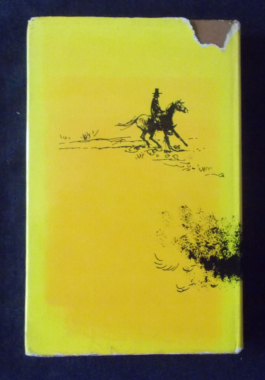
 Here is a roistering view of Australian from the time of the First Fleet onward, as seen by men and women who expressed their opinions of the country and each other in language forthright, abusive, wistful or cheerful. Part One is devoted to popular (and uniquely Australian) sayings, jests, rhymes, anecodotes and yarns...The bushman recounted, 'When I was doin' a bit o' grave diggin' at Guyra, it so was so perishin' cold there one winter we were forced to demand two weeks' notice of anyone who was goin' to die. It took us that long to dig the hole.' Part Two is Australian Perspectives 1788 - 1918: Farmer's Pride and Prisoner's Hell; The Southern El Dorado (includes a recipe for damper and Black Swans as Table Birds...); An Album of Victoriana; Land of Hope and Glory. You won't get anything more dinki-di than this volume.
Here is a roistering view of Australian from the time of the First Fleet onward, as seen by men and women who expressed their opinions of the country and each other in language forthright, abusive, wistful or cheerful. Part One is devoted to popular (and uniquely Australian) sayings, jests, rhymes, anecodotes and yarns...The bushman recounted, 'When I was doin' a bit o' grave diggin' at Guyra, it so was so perishin' cold there one winter we were forced to demand two weeks' notice of anyone who was goin' to die. It took us that long to dig the hole.' Part Two is Australian Perspectives 1788 - 1918: Farmer's Pride and Prisoner's Hell; The Southern El Dorado (includes a recipe for damper and Black Swans as Table Birds...); An Album of Victoriana; Land of Hope and Glory. You won't get anything more dinki-di than this volume. -
 Bill Scott became a 'battler' after his hilarious discharge from the Royal Australian Navy in 1949, after which he sets off round Queensland to try his hand at many occupations: 'fail-safe' gold prospecting with his mate Johnny (not much gold but lots of fun and experience) ; copper mining in Mount Isa, described as a kind of 'Foreign Legion' existence where men didn't speak about their pasts; cane cutting, one of the hardest labour jobs at that time and finally becoming 'fireman' on the little steam locomotives that help collect the cane harvest and take it to the mills for crushing. And throughout, he meets a swag of colourful characters and intriguing adventures. A real life adventure. Apparently, this is not a book for the 'politically correct' reader.
Bill Scott became a 'battler' after his hilarious discharge from the Royal Australian Navy in 1949, after which he sets off round Queensland to try his hand at many occupations: 'fail-safe' gold prospecting with his mate Johnny (not much gold but lots of fun and experience) ; copper mining in Mount Isa, described as a kind of 'Foreign Legion' existence where men didn't speak about their pasts; cane cutting, one of the hardest labour jobs at that time and finally becoming 'fireman' on the little steam locomotives that help collect the cane harvest and take it to the mills for crushing. And throughout, he meets a swag of colourful characters and intriguing adventures. A real life adventure. Apparently, this is not a book for the 'politically correct' reader. -
 The colourful and exciting story of Australian aviation and the men who chanced their lives in the primitive 'box kites' and gliders that were literally made from wood, wire and fabric. Thanks to these men, it was not long before Australia was brought nearer to the rest of the world by spanning oceans and continents. With fabulous archival photographs.
The colourful and exciting story of Australian aviation and the men who chanced their lives in the primitive 'box kites' and gliders that were literally made from wood, wire and fabric. Thanks to these men, it was not long before Australia was brought nearer to the rest of the world by spanning oceans and continents. With fabulous archival photographs.



